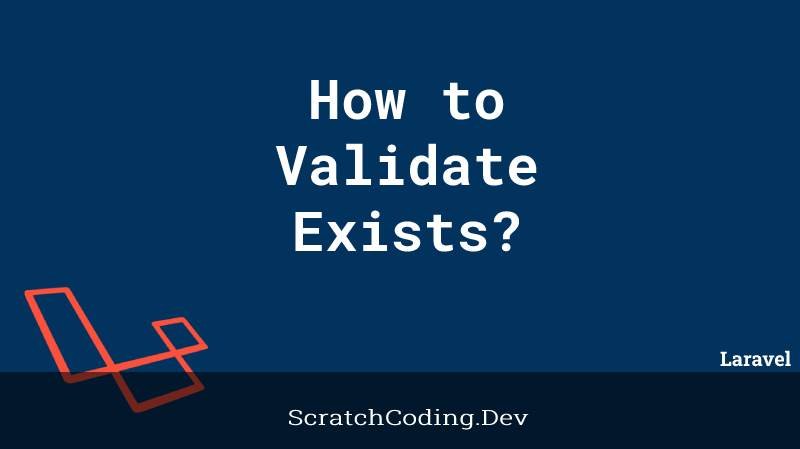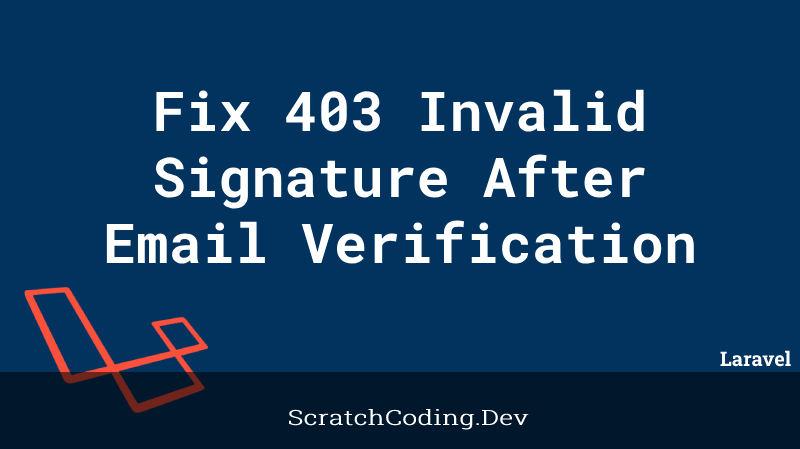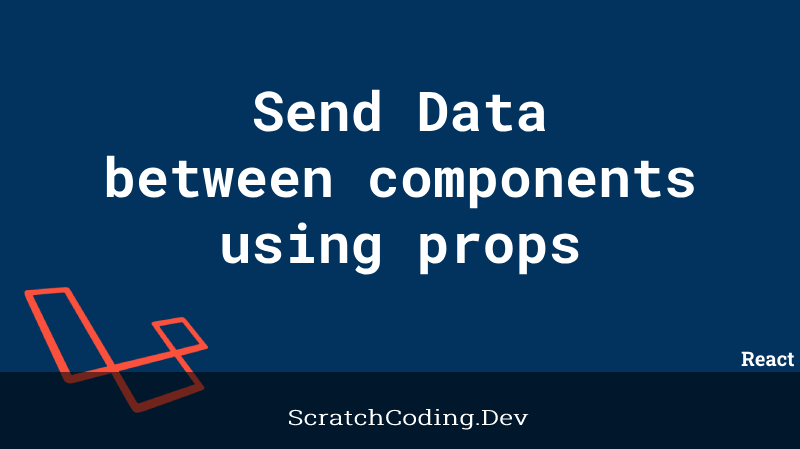We will learn in this tutorial how to implement existing validation in a Laravel form using the ‘exists‘ method in Laravel.
The Laravel ecosystem is developer-friendly and also, helps web developers to build desired functionality with minimum effort.
For instance, creating forms and adding validation in Laravel is easy using a validator. We will cover the ‘exists‘ validator example in this tutorial.
We will build a basic form with the title property and check if the title property is present in the database table. Generally the EXISTS operator checks for the existence of records in a subquery.
Likewise, The exists() field explicitly checks the field under validation rule concerning a given database table. If, anyhow, the column option is not defined, the field name will be used.
Laravel 9 Exists Validation Example
- Step 1: Download New Laravel App
- Step 2: Database Connection
- Step 3: Create Migration and Model
- Step 4: Setting Up Controller
- Step 5: Create Routes
- Step 5: Set Up Blade View Template
- Step 6: View App
Download New Laravel App
The first step is to create a new Laravel app and install composer globally. This lays the foundation for a fresh Laravel application.
composer create-project laravel/laravel --prefer-dist blogDatabase Connection
Next step is to create the database connection by updating your database details in .env file.
DB_CONNECTION=mysql
DB_HOST=localhost
DB_PORT=3306
DB_DATABASE=laravel_db
DB_USERNAME=root
DB_PASSWORD=In case you are using the MAMP local server in Mac operating system, ensure to add UNIX_SOCKET and DB_SOCKET database credentials in your .env file as shown below.
UNIX_SOCKET=/Applications/MAMP/tmp/mysql/mysql.sock
DB_SOCKET=/Applications/MAMP/tmp/mysql/mysql.sockCreate Migration and Model
In the next step, you have to run the command below and generate migration and model files.
php artisan make:model Blog -mOpen your database/migrations/create_blogs_table.php and add the values as given below.
<?php
use Illuminate\Database\Migrations\Migration;
use Illuminate\Database\Schema\Blueprint;
use Illuminate\Support\Facades\Schema;
class CreateBlogsTable extends Migration
{
/**
* Run the migrations.
*
* @return void
*/
public function up()
{
Schema::create('blogs', function (Blueprint $table) {
$table->id();
$table->string('title');
$table->timestamps();
});
}
/**
* Reverse the migrations.
*
* @return void
*/
public function down()
{
Schema::dropIfExists('blogs');
}
}Similarly, values need to be updated in your app/Blog.php file.
<?php
namespace App\Models;
use Illuminate\Database\Eloquent\Factories\HasFactory;
use Illuminate\Database\Eloquent\Model;
class Blog extends Model
{
use HasFactory;
public $fillable = [
'title',
];
}Now, initialize the migration using the php artisan command.
php artisan migrateSetting Up Controller
Open your terminal and type in the command below to create a new controller.
php artisan make:controller BlogControllerNow, open the new controller file at the location, app/Http/Controller/BlogController.php and update the code below in it.
<?php
namespace App\Http\Controllers;
use Illuminate\Http\Request;
use App\Models\Blog;
class BlogController extends Controller
{
public function index() {
return view('index');
}
public function store(Request $request) {
$validator = $this->validate($request, [
'title' => 'required|exists:blogs,created_at'
]);
if($validator) {
Blog::create($request->all());
}
return back()->with('success', 'Blog created.');
}
}Create Routes
In this step, you need to go to routes/web.php and add the routes to handle view and Laravel exists validation.
Set Up Blade View Template
Open your resources/views/ directory, and then create a index.blade.php in this file adding the code given below.
<!DOCTYPE html>
<html>
<head>
<meta charset="utf-8">
<title>Integrate Exists Validation in Laravel</title>
<link href="https://cdn.jsdelivr.net/npm/bootstrap@5.1.0/dist/css/bootstrap.min.css" rel="stylesheet">
</head>
<body>
<div class="container mt-5">
<form action="{{ route('validate.exists') }}" method="post">
@csrf
<div class="form-group">
<input class="form-control" name="title" value="{{ old('title') }}">
@if($errors->has('title'))
<span class="text-danger">{{ $errors->first('title') }}</span>
@endif
</div>
<div class="d-grid mt-3">
<button class="btn btn-dark">Submit</button>
</div>
</form>
</div>
</body>
</html>We will use the global old helper, it will help display the old input inside a blade template.
You will define the database column name that will be used by the validation rule by appending it right after the database table name.
Moreover, instead of specifying a table name directly, you can state the Eloquent model which can be used to determine the table name.
'id' => 'exists:App\Models\Blog,id'Start Laravel Application
Finally, start your Laravel app using the command given below.
php artisan serveYou may open your app using the URL below to test the form.
http://127.0.0.1:8000
Summary
This tutorial explains how to validate an input field value using the Laravel exists method. Moreover, we have learnt the basic use of exists rule in Laravel.









